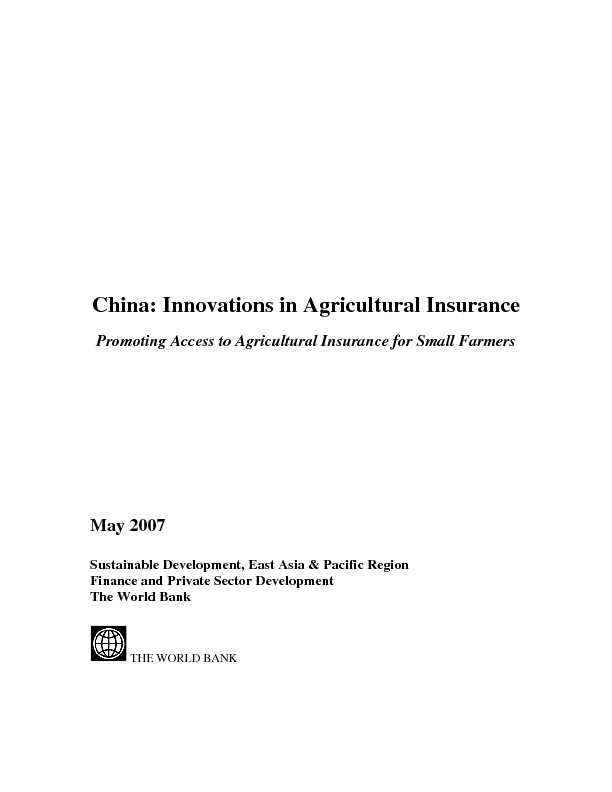Unlike conventional insurance, which indemnifies policyholders for verifiable production losses arising from multiple perils, index insurance indemnifies policyholders based on the observed value of a specified “index” or some other closely related variable that is highly correlated with losses. Index insurance exhibits lower transaction costs than conventional insurance, potentially making it more affordable to the poor in the developing world. However, it also offers less effective individual risk protection. This article provides a review of recent theoretical and empirical research on index insurance for developing countries and summarizes lessons learned from index insurance projects implemented in the developing world since 2000
Other
You are here
Content owner:
Jonatan A. Lassa
Topics:
The nature of does nothing in itself to stimulate the growing of agricultural crops but it can insure the non-growing of them (Geertz, 1963). The nongrowing and loss of crops due to biophysical and geophysical processes have been interpreted as risks and catastrophes that human being need to anticipate. This paper asks: what were the impacts of natural catastrophes on Indonesian agricultural crops during the last four decades? And what are the options available to mitigate future agriculture loss and safeguard food production in Indonesia? The quantitative analysis is based on two national datasets from Indonesia, namely the Disaster Loss data from Agricultural Statistics produced by the Ministry of Agriculture in 2009 and an online disaster database from the National Disaster Management Office updated in March 2012. This research concludes that Indonesia can achieve better food production by adopting multiloss mitigation scenarios. The chapter further highlights the impact of climate change on Indonesian agriculture, and existing policy instruments concerning disaster risk reduction in agricultural sectors. In addition, it makes policy recommendations for the Indonesian government and the international community regarding alternative solutions towards agricultural resilience.
Availability and Affordability of Insurance Under Climate Change Presentation to 2005 NAIC Winter Meeting Chicago - December 3, 2005 Evan Mills, Ph.D. U.S. Department of Energy Lawrence Berkeley National Laboratory University of California Berkeley, California - USA

Content owner:
The World Bank Group
Topics:
China is the world's most populous country and one of the largest producers and consumers of agricultural products. It produced crops and livestock valued at $366 billion in 2004, about 50 percent more than the U.S. total. Despite limited supplies of land, water, and other natural resources, China grows most of its own food and is a major exporter of many agricultural commodities. China ranks number 1 in the world in rice paddy production with over 40 percent more production than India which ranks number 2. Importantly, China also ranks number 1 in the world in fresh vegetable production with 4 times more production than India which ranks number 2 again. China is also the largest wheat producing country in the world. In total, China ranks number 1 in the world in the production of 45 agricultural commodities (FAO, 2005).
